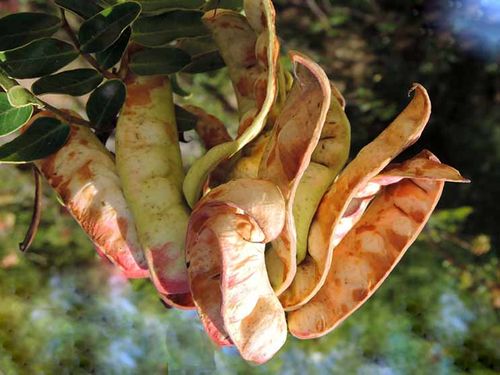Difference between revisions of "Tara"
| (17 intermediate revisions by one user not shown) | |||
| Line 1: | Line 1: | ||
<p align=center> | <p align=center> | ||
| − | [[bild: | + | [[bild:LEATHER-DICTIONARY.jpg|300px]] |
</p> | </p> | ||
| − | Tara | + | Tara is a plant [[Tannins|tannin]] obtained from the small tara tree (Cesalpina spinosa). The tree itself is thorny with pea-like pods. The tara tree or shrub grows at altitudes of 1,800 to 3,000 metres mainly in Peru, Brazil and India. The plants usually grow in the wilderness (about 80%). The fruit peels are used for tannin production. Each tree provides approximately 25 to 50 kilos of pods. |
<p align=center> | <p align=center> | ||
| − | [[bild: | + | [[bild:Tara.jpg|500px]] |
| − | + | ||
</p> | </p> | ||
<p align=center> | <p align=center> | ||
| − | '' | + | ''Pods of the tara tree.''<br></p> |
<p> </p> | <p> </p> | ||
| − | + | From April till December, the tara pods are harvested without harming the tree. The pods are an important source of income for Peru's rural population. The valuable ingredients of the yellow-red tara were used centuries ago by the people of Peru as a remedy for throat aches. Numerous other fields of application of the pods and their ingredients are also known: It`s a basic material for the production of paints, as a reducing agent in the chemical industry or as a clarifying agent in the production of spirits. | |
| − | + | Tara pods contain about 50% [[Tannins|tannin]] (fruit peels 48%, seed 52%). However, the grains are removed and only the pods are milled to powder and then used as a tanning agent. The tara tannin [[tanning leather|produces]] a whitish, cream-coloured leather. This can be dyed effectively and has a high level of [[Colour fastness - Light fastness of leather|light fastness]]. [[Mimosa]] and [[quebracho]] have the disadvantage of giving the leather a reddish tone. | |
| − | + | A further advantage is that the pods regrow. [[Vegetable-tanned leather|Tannins in bark]] can only be obtained by harvesting the entire plant. | |
| − | + | Tara-[[tanning leather|tanned leather]] can be used as [[car leather]], [[leather shoes|shoe leather]], [[furniture leather]] or [[clothing leather]]. Also, [[Sheepskin - Lambskin|lambskin]] is tanned with tara tannins. | |
| − | + | ||
| − | + | ||
| − | + | == Additional information == | |
| − | + | * [[Tannins]] | |
| − | + | * [[Vegetable-tanned leather]] | |
| − | < | + | <logoplustext /> |
| − | + | ||
| − | [[Kategorie: | + | [[Kategorie:All Articles]] |
| − | [[Kategorie: | + | [[Kategorie:Leather production]] |
Latest revision as of 20:13, 6 December 2021
Tara is a plant tannin obtained from the small tara tree (Cesalpina spinosa). The tree itself is thorny with pea-like pods. The tara tree or shrub grows at altitudes of 1,800 to 3,000 metres mainly in Peru, Brazil and India. The plants usually grow in the wilderness (about 80%). The fruit peels are used for tannin production. Each tree provides approximately 25 to 50 kilos of pods.
Pods of the tara tree.
From April till December, the tara pods are harvested without harming the tree. The pods are an important source of income for Peru's rural population. The valuable ingredients of the yellow-red tara were used centuries ago by the people of Peru as a remedy for throat aches. Numerous other fields of application of the pods and their ingredients are also known: It`s a basic material for the production of paints, as a reducing agent in the chemical industry or as a clarifying agent in the production of spirits.
Tara pods contain about 50% tannin (fruit peels 48%, seed 52%). However, the grains are removed and only the pods are milled to powder and then used as a tanning agent. The tara tannin produces a whitish, cream-coloured leather. This can be dyed effectively and has a high level of light fastness. Mimosa and quebracho have the disadvantage of giving the leather a reddish tone.
A further advantage is that the pods regrow. Tannins in bark can only be obtained by harvesting the entire plant.
Tara-tanned leather can be used as car leather, shoe leather, furniture leather or clothing leather. Also, lambskin is tanned with tara tannins.
Additional information









 a kotori web solution
a kotori web solution